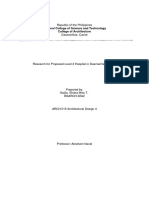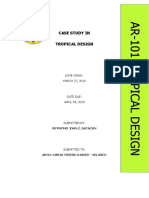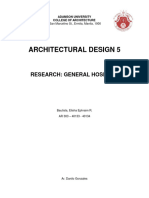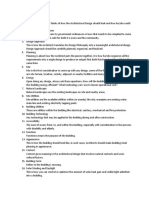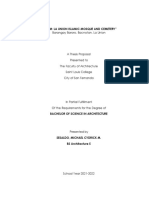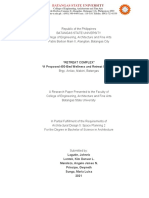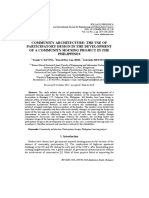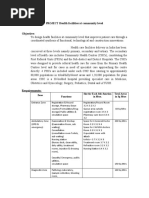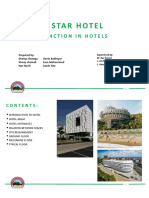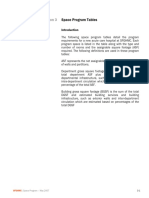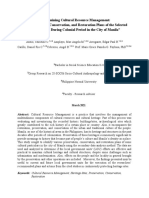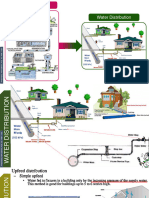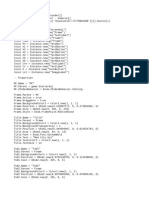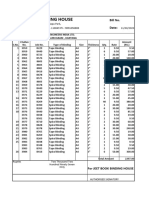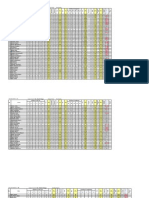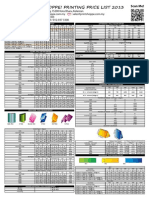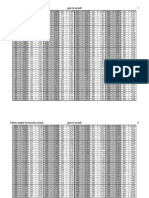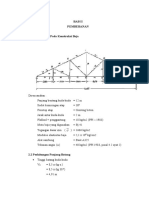Time Saver Standards For Architectural Design Data - 1010
Time Saver Standards For Architectural Design Data - 1010
Uploaded by
Ajir Still HereCopyright:
Available Formats
Time Saver Standards For Architectural Design Data - 1010
Time Saver Standards For Architectural Design Data - 1010
Uploaded by
Ajir Still HereOriginal Title
Copyright
Available Formats
Share this document
Did you find this document useful?
Is this content inappropriate?
Copyright:
Available Formats
Time Saver Standards For Architectural Design Data - 1010
Time Saver Standards For Architectural Design Data - 1010
Uploaded by
Ajir Still HereCopyright:
Available Formats
Introduction to the SI metric system
Units of measurement and metrication 3
Summary: The SI system (after Le Systme International dUnites)
is the internationally adopted standard of measurement, based on the
meter-kilogram-second-ampere system of fundamental units, modifying the prior European metric unit system and replacing the United
States customary measurement systems. This introduction provides a
brief overview.
Key words: metrics, metrification, customary measurement units,
SI units.
What is SI metric?
SI metric is the name given to the new measurement system being
adopted on a worldwide basis. It differs somewhat from the longstanding European metric system. SI stands for Le Systme International dUnites, a name generated by the thirty six nations meeting at
the 11th General Conference on Weights and Measures (CGPM) in
1960. SI is a coherent means of measurement based on the meterkilogram-second-ampere system of fundamental units. Conversions
within the system are never necessary (e.g., as in the customary system, ounces to pounds and inches to feet, etc.).
How new is the Metric System to the United States?
Developed at the time of the French Revolution, the metric system
spread throughout Europe during the Napoleonic era. It was promoted
in the United States first by Thomas Jeffersion and subsequently by
John Quincy Adams. In 1866, Congress made the metric system a
legal system of units for U.S. use. In 1875 the United States and sixteen other nations formed the General Conference on Weights and
Measures (CGPM). The United States has been active in the periodic
meetings of this group. In 1893, an Executive Order made the meter
and the kilogram fundamental standards from which the pound and
the yard would henceforth be derived. In 1960 the CGPM established
the SI system and has subsequently modified it in several meetings.
Who is coordinating the conversion to SI Metric in the United States?
The Omnibus Trade and Competitiveness Act of 1988 and its amendments declared the metric system as the preferred system of measurement in the United States and required its use in all federal activities
to the extent feasible. Federal agencies formed the Construction
Metrification Council within the National Institute of Building Sciences (NIBS) in Washington, DC. The Council is responsible for coordinating activities and distributing information and metric resources
(NIBS 1991).
What are some rules of grammar?
TOC
i
W
Double prefixes should never be used; e.g., use Gm (gigameter),
not Mkm (megakilometer).
Base units are not capitalized unless in writing a symboll derived
from a proper name; e.g., 12 meters or 12m, 60 newtons or 60N.
Plurals are writen normally except for quantities less than 1. In
such cases the s is deleted; e.g., 2.6 meters and 0.6 meter.
Prefix symbols are not capitalized except for M (mega), G (giga),
and T(tera). This avoids confusion with m (meter), g (gram), and
t (metric ton). One metric ton (t) is equal to one megagram (Mg).
Periods are not used after symbols except at the end of a sentence.
Commas should not be used to clarify groups of digits; instead,
use spaced groups of three on each side of the decimal point.
Table 1
What are the principal units used in structures which
will be of concern to the architect?
Name
Symbol
Use
Meter
Millimeter
Square millimeters
Square meters
Hectare
104 m
Cubic millimeters
Cubic meters
Section modulus
Moment of inertia
Kilogram
Newton
Pascal
m
mm
mm2
m3
ha
Site plan dimensions, building plans
Building plans and details
Small areas
Large areas
Very large areas (1 hectare equals
mm3
m3
mm3
mm4
kg
N
Pa
Mass density
Degree Celsius
kg/ m3
C
Small volumes
Large volumes
Property of cross section
Property of cross section
Mass of all building materials
Force (all structural computations)
Stress or pressure (all structural
computations;
one pascal equals one newton per
square meter)
Density of materials
Temperature measurement
Table 2
Multiplication factors
Prefix
Symbol
10
tera
109
106
103
giga (jiga)
mega
kilo
G
M
k
102
101
10-1
10-2
hecto
deka
deci
centi
h
da
d
c
10-3
milli
10-6
10-9
10-12
10-13
10-18
micro
nano (nano)
pico (peco)
femto
atto
m
n
p
f
a
12
frequently
used by
architects
To be consistent and avoid confusion, prefixes should change in steps of 103;
therefore, these four should be avoided if at all possible.
Author: R. E. Shaeffer
Credits: Introduction reproduced from R.E. Shaeffer, Building Structures: Elementary analysis and design. Englewood Cliffs, NJ: PrenticeHall. 1980. by permission of the author. ASTM Standard (following pages) reproduced by permission American Society for Testing and
Materials.
References: ASTM. 1994. ASTM E621Standard Practice for the Use of Metric (SI) Units in Building Design and Construction. Philadelphia: American Society for Testing and Materials.
NIBS. 1991. Metric Guide for Federal Construction. Washington, DC: National Institute of Buidling Sciences.
Copyright 1999 by The McGraw-Hill Companies, Inc. All rights reserved. Use of this product is subject to the terms of its License Agreement.Click here to view.
Time Saver Standards: Part III, Appendix
AP-89
You might also like
- Research Paper HospitalDocument8 pagesResearch Paper HospitalShaira Mea GajilaNo ratings yet
- Hedonistic Sustainability - Natural HabitatsDocument2 pagesHedonistic Sustainability - Natural HabitatsPavithra SuparamanianNo ratings yet
- Makati Med - Presentation RevDocument32 pagesMakati Med - Presentation RevAle Aiybei LangpoNo ratings yet
- Land Measurement in PunjabDocument3 pagesLand Measurement in PunjabJunaid Iqbal50% (4)
- Comparison of French and Italian Gothic ArchitectureDocument2 pagesComparison of French and Italian Gothic Architectureughmalum xxNo ratings yet
- Spanish Colonial Churches in The PhilippinesDocument1 pageSpanish Colonial Churches in The PhilippinesFrancis Carlo CondeNo ratings yet
- Tropical Design Case StudyDocument9 pagesTropical Design Case StudyReymond John Zamora BatacanNo ratings yet
- Research General HospitalDocument14 pagesResearch General HospitalWILJHON EZROM BAUTISTANo ratings yet
- Design ConsiderationsDocument2 pagesDesign ConsiderationsManet PalevinoNo ratings yet
- Buenos Aires City HallDocument8 pagesBuenos Aires City HallSenouiiNo ratings yet
- SYNOPSISDocument13 pagesSYNOPSISJoseph CajoteNo ratings yet
- Module 2 Introduction To Site Planning and LandscapingDocument11 pagesModule 2 Introduction To Site Planning and LandscapingGenesis GonzalesNo ratings yet
- Cabalza Dennis VDocument44 pagesCabalza Dennis VSam BrilloNo ratings yet
- Research Paper Retreat ComlexDocument172 pagesResearch Paper Retreat Comlexstyvhen dealdayNo ratings yet
- Healthcare Waste Management and Guidelines in Palnning and Designing of Hospital Design 5 (Reasearch)Document14 pagesHealthcare Waste Management and Guidelines in Palnning and Designing of Hospital Design 5 (Reasearch)Jeffrey ManansalaNo ratings yet
- Filipino Architecture: 20 C: Modern Islamic Chinese Japanese IndianDocument57 pagesFilipino Architecture: 20 C: Modern Islamic Chinese Japanese IndianJ VNo ratings yet
- Public Views On Philippine Mining Service Cooperation in Pugalo, Alcoy, CebuDocument7 pagesPublic Views On Philippine Mining Service Cooperation in Pugalo, Alcoy, CebuKimSon - baby SixteenNo ratings yet
- Time Savers Standards HotelDocument2 pagesTime Savers Standards HotelClark EstacioNo ratings yet
- Hoa PH PrelimDocument33 pagesHoa PH PrelimangerawrrNo ratings yet
- Design III Research (RevisedDocument12 pagesDesign III Research (RevisedChristelle AbusoNo ratings yet
- Slaughterhouse Equipment 1 1 2Document22 pagesSlaughterhouse Equipment 1 1 2Mesheil TaladroNo ratings yet
- CHAPTER 2 A-proposed-PJG-Hospital-extension-in-Talavera-Nueva-EcijaDocument4 pagesCHAPTER 2 A-proposed-PJG-Hospital-extension-in-Talavera-Nueva-EcijaPhilip PinedaNo ratings yet
- San Agustin ChurchDocument5 pagesSan Agustin ChurchJoshua RodilNo ratings yet
- Public Library: Within This PageDocument9 pagesPublic Library: Within This PageVinayAgrawal100% (1)
- Tourism in CalambaDocument3 pagesTourism in CalambaJanelle M. JumadiaoNo ratings yet
- HospitalDocument24 pagesHospitalrini0026100% (1)
- FasilDocument9 pagesFasilsarililmekonnenNo ratings yet
- Case Study - IVDocument9 pagesCase Study - IVIshara AryalNo ratings yet
- 1 A Proposed Therapeutic Resort Complex in Siargao Island Developing A Better Healing Environment Through Biophilic DesignDocument276 pages1 A Proposed Therapeutic Resort Complex in Siargao Island Developing A Better Healing Environment Through Biophilic DesignFrancine Joyce AguilaNo ratings yet
- Community Architecture: The Use of Participatory Design in The Development of A Community Housing Project in The PhilippinesDocument12 pagesCommunity Architecture: The Use of Participatory Design in The Development of A Community Housing Project in The PhilippinesJon ELNo ratings yet
- Launceston General Hospital Expansion PlansDocument37 pagesLaunceston General Hospital Expansion PlansThe ExaminerNo ratings yet
- PrecastDocument5 pagesPrecastRosh PilapilNo ratings yet
- History of Architecture Famous Architects and ChurchesDocument31 pagesHistory of Architecture Famous Architects and ChurchesLuisa MayNo ratings yet
- Community Health CenterDocument3 pagesCommunity Health CenterAnant PrakashNo ratings yet
- Adamson Arki OJT GuidelinesDocument11 pagesAdamson Arki OJT GuidelinesRoy Benedict Bautista100% (1)
- 4 Star Hotel: Function in HotelsDocument24 pages4 Star Hotel: Function in HotelsHemn Shex SdeeqNo ratings yet
- Romanesque in ItalyDocument12 pagesRomanesque in Italyharshita sethiNo ratings yet
- Group 1 - Ecumenical ChurchDocument13 pagesGroup 1 - Ecumenical ChurchLesther RobloNo ratings yet
- Space Programming - General HosptalDocument51 pagesSpace Programming - General HosptalJames LazarteNo ratings yet
- Medical Chandan Hospital CasestudyDocument5 pagesMedical Chandan Hospital CasestudyRITIKANo ratings yet
- The Art and Science of Feng Shui-A Study On Architects' Perception (Building and Environment, Vol. 40, Issue 3) (2005)Document8 pagesThe Art and Science of Feng Shui-A Study On Architects' Perception (Building and Environment, Vol. 40, Issue 3) (2005)ponigo2006No ratings yet
- University of Pangasinan College of Architecture Architectural Design 6Document2 pagesUniversity of Pangasinan College of Architecture Architectural Design 6Doroty CastroNo ratings yet
- Group 2: (Group B - Residentials, Hotels and Apartments & GROUP H-Assembly Other Than Group I)Document16 pagesGroup 2: (Group B - Residentials, Hotels and Apartments & GROUP H-Assembly Other Than Group I)KrischanSayloGelasanNo ratings yet
- History of Architecture IV: Philippine Architecture in The American PeriodDocument113 pagesHistory of Architecture IV: Philippine Architecture in The American PeriodJamna Myrein VallesterosNo ratings yet
- (Pars Hospital) International Case StudyDocument9 pages(Pars Hospital) International Case Studyesuba0386No ratings yet
- Case-Study Vilde Og ElisabethDocument40 pagesCase-Study Vilde Og ElisabethRNo ratings yet
- History of Landscape DevelopmentDocument2 pagesHistory of Landscape DevelopmentNishantRattanBhardwajNo ratings yet
- Principles and Examples of Design of RehabilitatioDocument4 pagesPrinciples and Examples of Design of Rehabilitatiosammyxtian24No ratings yet
- Reexamining Cultural Resource ManagementDocument15 pagesReexamining Cultural Resource ManagementAngel CebrerosNo ratings yet
- All Refresher - NO ANSWERDocument390 pagesAll Refresher - NO ANSWERnoadspls2029No ratings yet
- National Center For Mental Health: Nueve de Pebrero St. Mandaluyong CityDocument16 pagesNational Center For Mental Health: Nueve de Pebrero St. Mandaluyong CityRuvie Ann Alamo BallesterNo ratings yet
- 3c - Upfeed and DownFeed Water System Including Hot WaterDocument11 pages3c - Upfeed and DownFeed Water System Including Hot WaterRegine Olaya100% (1)
- Site Selection of FacilitiesDocument2 pagesSite Selection of Facilitiesnelson legaspiNo ratings yet
- History of Architecture 4Document1 pageHistory of Architecture 4KHAYZEKIEL ROMINNo ratings yet
- Fire Code PHDocument4 pagesFire Code PHChin GuNo ratings yet
- Site Analysis Studio 3Document61 pagesSite Analysis Studio 3Nyzem NasirNo ratings yet
- Laws Affecting Architectural PracticeDocument19 pagesLaws Affecting Architectural Practicejologs1234 koopalNo ratings yet
- Medical Implants111Document3 pagesMedical Implants111Shamil AlejoNo ratings yet
- Si 2Document9 pagesSi 2mobinsaiNo ratings yet
- International System of UnitsDocument11 pagesInternational System of UnitsjbahalkehNo ratings yet
- International Metric System...Document2 pagesInternational Metric System...Sanket SatpathyNo ratings yet
- SI Prefixes: Prefix Symbol Factor Prefix Symbol Factor Y Z E P T G M k h da d c m μ n p f a z yDocument2 pagesSI Prefixes: Prefix Symbol Factor Prefix Symbol Factor Y Z E P T G M k h da d c m μ n p f a z yDerick PeraltaNo ratings yet
- Jadwal X Nkpi 1Document18 pagesJadwal X Nkpi 1RichanNo ratings yet
- Mad City Gui - ScRipt HunTerDocument7 pagesMad City Gui - ScRipt HunTeralvinijr12No ratings yet
- Nuevo Hoja de Cálculo de Microsoft ExcelDocument14 pagesNuevo Hoja de Cálculo de Microsoft ExcelMarcelo SalasNo ratings yet
- Bairstows MethodDocument6 pagesBairstows MethodJayvee MemanNo ratings yet
- Bill Nov-GURGAON-1Document2 pagesBill Nov-GURGAON-1Ajay SinghNo ratings yet
- Class Record 2011-2012xlsDocument16 pagesClass Record 2011-2012xlsRaine del RosarioNo ratings yet
- DBX 1066 Lim SCHDocument13 pagesDBX 1066 Lim SCHmolinsonNo ratings yet
- 2212018Document5 pages2212018georgeNo ratings yet
- خاصيات القوى+الحساب الحرفيDocument1 pageخاصيات القوى+الحساب الحرفيcherazerNo ratings yet
- Teoría de Tornillos.Document58 pagesTeoría de Tornillos.joseNo ratings yet
- Penilaian P5BK X.5 2024Document18 pagesPenilaian P5BK X.5 2024Aurelius KilaNo ratings yet
- Printshoppe Price ListDocument2 pagesPrintshoppe Price ListArmin HaiqalNo ratings yet
- First Quarter Summative Test Technology and Home Economics 7Document3 pagesFirst Quarter Summative Test Technology and Home Economics 7Lea CardinezNo ratings yet
- GSM To OZ Conversion TableDocument2 pagesGSM To OZ Conversion TableAnuruddha Jayasena75% (12)
- Measurement of Land in PunjabDocument3 pagesMeasurement of Land in PunjabcoolnikxNo ratings yet
- Yamato Steel Profiles PDFDocument51 pagesYamato Steel Profiles PDFויליאם סן מרמיגיוסNo ratings yet
- GS Ratio Recipe HomeworkDocument9 pagesGS Ratio Recipe HomeworkAmani A. YusefNo ratings yet
- Kilos To PoundsDocument1 pageKilos To PoundsAnonymous IqAZHukNo ratings yet
- Eldritch Horror Foamcore Insert Diagram 1.1Document7 pagesEldritch Horror Foamcore Insert Diagram 1.1denismlNo ratings yet
- Childrens ABB Tee Regular A4Document10 pagesChildrens ABB Tee Regular A4elizabeth lovecraftNo ratings yet
- Vims Vas - Aaes - 01 07 2022Document144 pagesVims Vas - Aaes - 01 07 2022Julia JacoboNo ratings yet
- Catrina She0lDocument3 pagesCatrina She0lAustrevert Fion FionNo ratings yet
- Calcul Numeric 2019Document70 pagesCalcul Numeric 2019BogdanNo ratings yet
- Debug 1214Document57 pagesDebug 1214zarandadaNo ratings yet
- Nucor Yamato Steel Catalog 2008Document50 pagesNucor Yamato Steel Catalog 2008David D'AgostinoNo ratings yet
- Meter-Centimeter - Conversion WorksheetDocument2 pagesMeter-Centimeter - Conversion Worksheetapi-633701723No ratings yet
- Perhitungan 1.Document20 pagesPerhitungan 1.Insan KamilNo ratings yet
- Lesson 2 - Conversion of Units 2023Document14 pagesLesson 2 - Conversion of Units 2023yhaelguan77No ratings yet
